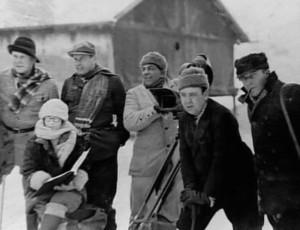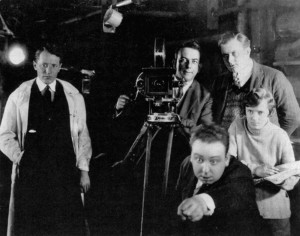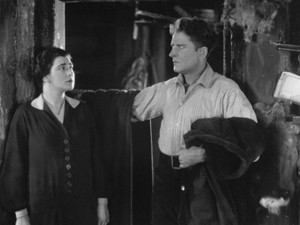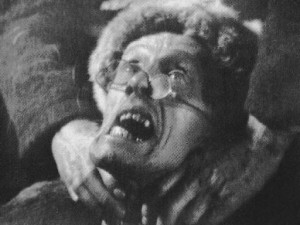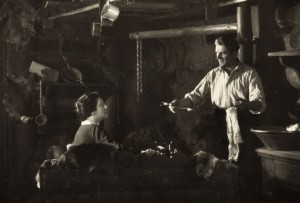The Mountain Eagle (1926, Bernhard Goetzke, Nita Naldi, Malcolm Keen) – Classic Movie Review 459
Alfred Hitchcock’s second film from 1926 enjoys unenviable status as one of silent cinema’s most famous missing movies and one of the most searched-for films in history. Indeed, it’s infamous now as the only Hitchcock film that is still missing, presumed lost for ever. It is a highlighted film being officially hunted by the British Film Institute, apparently convinced there’s a copy out there somewhere.
One review in 1926 claimed The Mountain Eagle was ‘far superior to The Lodger‘. With its a love quadrangle between a man, his mentally ill son, a teacher and a hermit, it does sound quite thrilling and quite Hitchcockian. Charles Lapworth’s story and Eliot Stannard’s screenplay is about Mr Pettigrew (Bernhard Goetzke), a Kentucky mountain town shop-keeper, who falls in love with the innocent local teacher, Beatrice (Nita Naldi).
When she doesn’t respond to his advances, he accuses her of molesting his mentally ill son Edward (John F. Hamilton). Beatrice runs off to the mountains, where she finds love with a hermit, Fear O’God Fulton (Malcolm Keen), marries him and has a child. Pettigrew hides Edward and accuses the hermit of his son’s murder. But the hermit escapes from jail and takes refuge in the mountain with his wife and son.
Though it sounds original and fascinating, Hitchcock had other ideas. ‘It was a very bad movie,’ said Hitchcock, a normally studio-based director who enjoyed taking his cameras outside on location in the Austrian Tyrol. Hitchcock arrived with his future wife Alma Reville in the Tyrolean village of Obergurgl in October 1925, clad in knickerbockers, hiking boots and a felt hat, scouting for a location that resembled Kentucky.
When he left several months later after completing his second film, he was in bad odour after he had ordered the alpine meadows to be cleared of snow, caused a roof to collapse, caused offence by declining to stay in the village inn and complaining about the guttural sound of their dialect. They were glad to see the back of him and he of them as he had been affected by altitude sickness.
Infuriatingly, no print is known to exist anywhere and the completely unsubstantiated suspicion is that Hitchcock might have deliberately destroyed the negative of it, though this would not explain why no print has ever turned up anywhere.
Hitchcock married Alma Reville that year, on 2 December 1926 and they stayed married till his death on 29 April 1980.
Hitchcock’s collection of 59 film stills from the movie was auctioned on 15 and 16 December 2012 in Los Angeles. They are custom printed in oversized formats, intended exclusively for Hitchcock’s personal archives.
Naldi collapsed from exhaustion on the set while filming. She became a star with 1922’s Blood and Sand opposite Rudolph Valentino and Cecil B DeMille’s 1923 The Ten Commandments. Naldi’s career did not survive the coming of sound and never made another film after 1927 despite an acceptable voice. In need of money, she continued to be active on the stage and later on TV. On 17 February 1961, Naldi died of a heart attack in her room at the Wentworth Hotel in New York, aged 66.
© Derek Winnert 2013 Classic Movie Review 459
Check out more reviews on http://derekwinnert.com/

